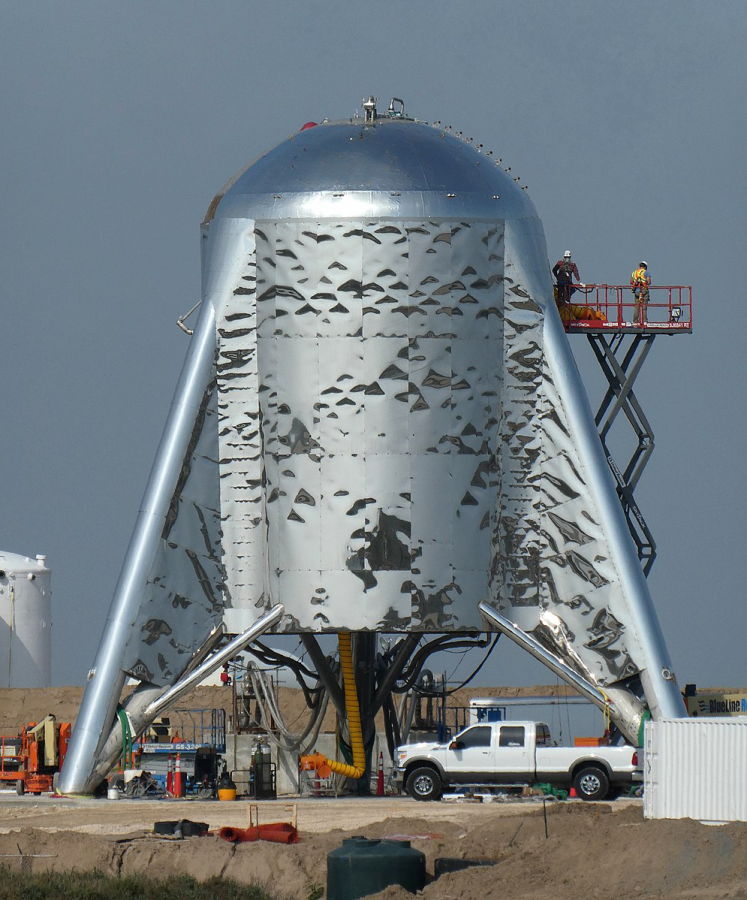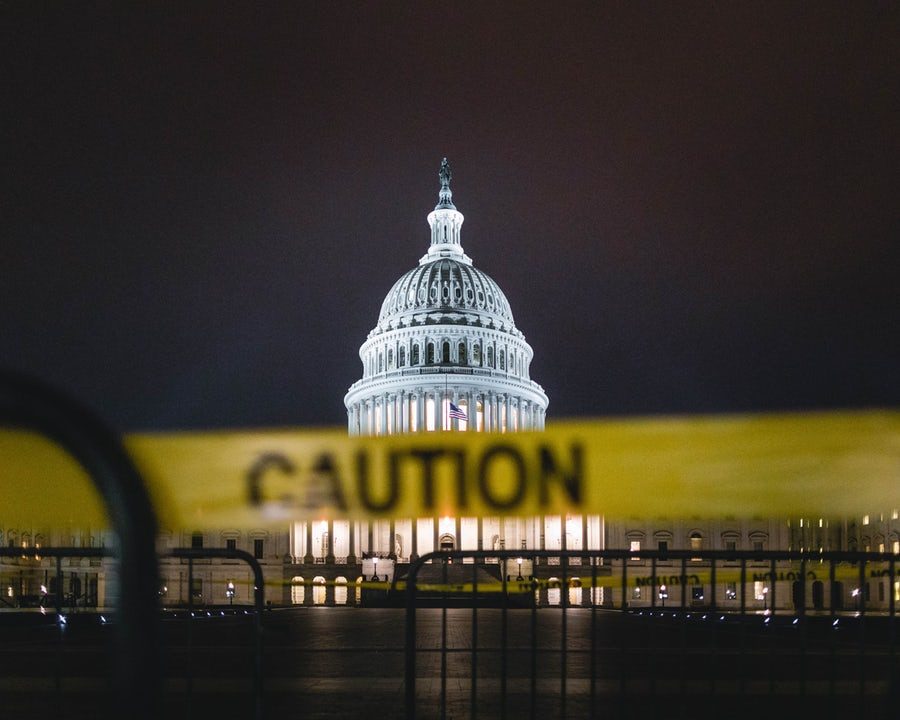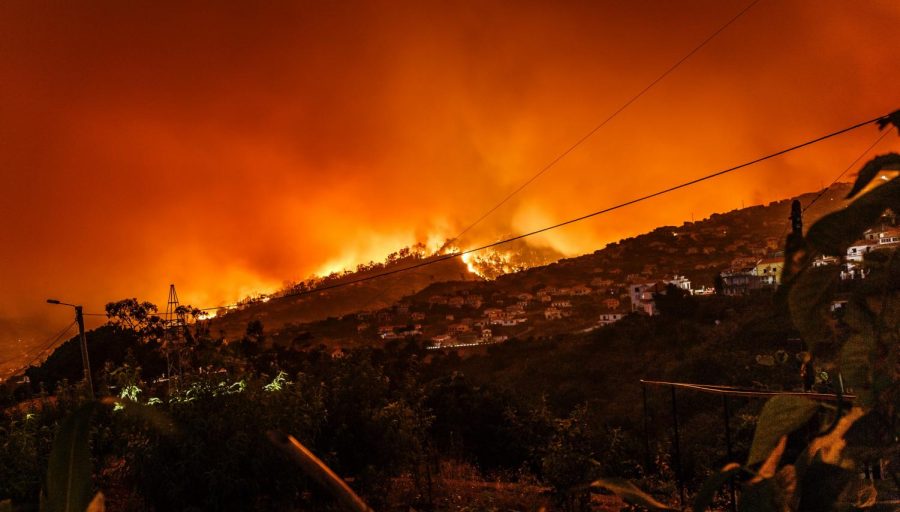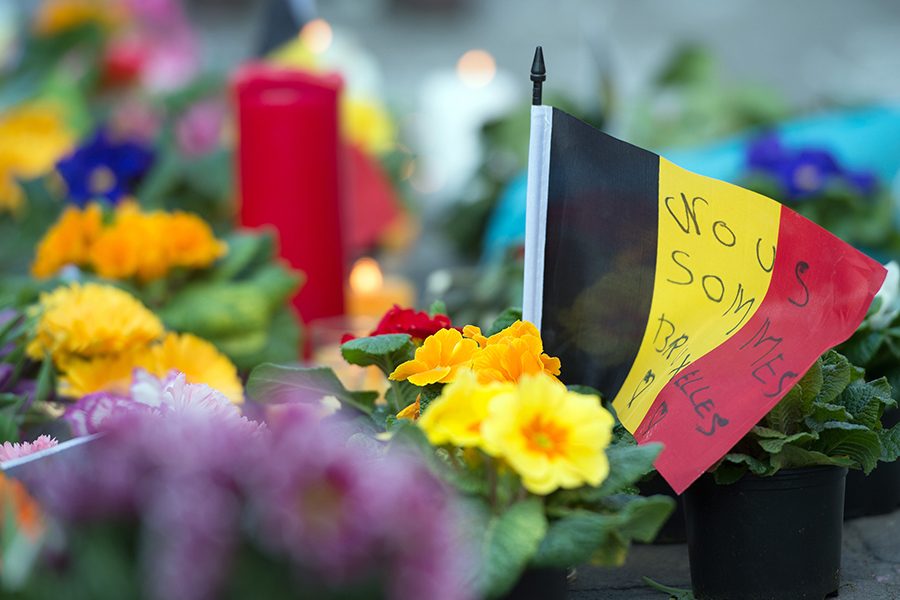Brussels airport bombing kills 35 and injures 300
''Nous sommes Bruxelles'' (We are Brussels) is written on a small Belgian flag next to flowers and candles outside the stock exchange at Place de la Bourse in Brussels on Tuesday, March 22, 2016. (Federico Gambarini/DPA/Zuma Press/TNS)
May 5, 2016
On March 22, terrorist attacks in Brussels, Belgium killed 35 people and left 300 others wounded. The death toll later increased when four people that were injured in the blast died in the hospital.
That morning, two homemade bombs exploded in the check-in area of the airport, followed by another bomb at a busy subway station. A third bomb was found unexploded at the airport, but the two that were detonated blew holes in the roof and maimed scores of people as they waited to check their baggage.
As police searched for suspects, they carried out 13 raids around the area and took nine people in for questioning. Six of them were released and three remained in custody.
Those three men were charged in Belgium on Monday March 21 and were accused of participating in the activities of a terrorist group. However, investigators have been tight-lipped about the specific allegations against people who are in custody. In the days since the attacks, a number of people were arrested and charged, only to be released later when investigators said the evidence against them was not conclusive.
Their names are listed in an 11-page security bulletin that was circulated among European law enforcement agencies on March 23, the day after the Brussels attacks.
Two other bombers who were a part of the attack were brothers Khalid and Brahim el-Bakaoui. Brahim took part in the attack at the airport, where 11 people died and Khalid struck at the Maelbeek metro, where 20 people died.
Furthermore, authorities announced that a man they had identified as Faycal C. who was charged with “terrorist murder” was being set free.
All but one of the suspects were said to either have connections to Abdelhamid Abaaoud, the leader of the stacks in Paris, or Salah Abdeslam, the only survivor among the Paris attackers, who was arrested earlier in Brussels and was declared as Europe’s most wanted man. The third bomber, however, remained anonymous within the investigation.
“It clearly is a setback,” Paul Cruickshank, CNN terrorism analyst, said. “They clearly at a certain point, perhaps based on eyewitness reports, believed that he might have been at the airport, might have been involved. They clearly do not now believe that…so there’s this manhunt that goes on.”
Authorities in Belgium and the United States have a list of people who they believe he could be, and they are following leads from multiple places.
“The lack of identification to me is surprising,” Philip Mudd, a former CIA official and CNN counterterrorism analyst, said.
Belgian police renewed their call for tips about the suspect and released a video revealing him walking through the airport, however, they remained unable to identify exactly who it was.
At the airport, officials said they were trying to get things up and running, but more work needed to be done. Hundreds of staffers conducted tests of a temporary setup for security screenings, checking in and checking luggage.
“The simple fact,” the airport said, “is that a restart in the short term is not possible in the devastated infrastructure.”

















